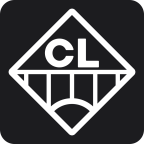Laser cutting has become the preferred process in the field of carbon steel processing due to its high precision, high efficiency, and wide applicability. However, in order to obtain clean incisions, reduce burrs, and ensure overall cutting quality, it is necessary to carefully optimize the cutting process. This guide will provide key optimization strategies for carbon steel plates of different thicknesses.
When air cutting thin carbon steel plates
When processing thin carbon steel, one frequent challenge is slag adherence on the bottom surface of the workpiece. Two distinct Burrs typically occur:
Burrs stick to the bottom of the workpiece and spread out like sunflowers - as shown in Left image. It usually caused by high defocusing.
Burrs stick to the bottom of the workpiece and appear upright - as shown in Right image. It usually caused by low defocusing.

The position of the focal point affects slag adhesion and cut quality. Correct focus settings are essential to eliminate these defects and achieve burr-free cuts.

Air Cutting Negative Focus Recommendations for Thin Carbon Steel

Note: For optimal, slag-free results, fine-tune these parameters based on actual material surface conditions, cutting speed, and nozzle wear.
When oxygen cutting thick carbon steel plates
Laser cutting thicker carbon steel often introduces different challenges. Here are three common issues and how to address them:
A. Incomplete Cutting
Cause: Cutting speed too fast or insufficient peak power.
Solution: Reduce speed and increase peak power in the parameter settings.
B. Slag Buildup at the Bottom Edge
Cause: Cutting speed is too fast, or power is too low to fully penetrate.
Solution: Adjust to slower speeds and increase power for full-depth cutting.

Aside from adjusting speed and power, effectively solving these issues and ensuring stable, high-quality cuts for thick carbon steel requires accurately calculating and setting the laser focus.
How to Set the Optimal Focus Position for Negative Defocus Cutting of Carbon Steel?
For negative defocus cutting, determining the correct focus position is essential to ensure full penetration, clean kerf edges, and slag-free results. A simple and effective formula to determine the focus is:
Focus Position = Plate Thickness / 2 + Cutting Height
(Focus is set below the surface of the material; use a negative value)
Example:
For a 40 mm carbon steel plate with a cutting height of 3 mm:
Focus Position = 40 / 2 + 3 = 23 → Set the focus at -23 mm
Recommended Cutting Height for Negative Focus Cutting
The cutting height should also be carefully adjusted based on the thickness of the carbon steel:
Recommended Range: 1.5 mm – 3.5 mm
Tip: The thicker the plate, the higher the cutting height should be.
Accurately setting both focus and cutting height ensures the laser beam converges at the ideal location within the material, enhancing edge quality and cutting efficiency.

C. Slag Accumulation Around the Piercing Point
Issue: When perforating thick plates, molten slag can accumulate and interfere with subsequent cutting, compromising stability and quality.

Two common methods was typically employed to deal with slag buildup during pierce: the "Slow Start" method and increasing cutting follow-up height. While somewhat effective, these methods come with significant downsides:
1. Shortened nozzle life, leading to higher maintenance and replacement costs
2. Rougher cutting finish, negatively impacting product quality













